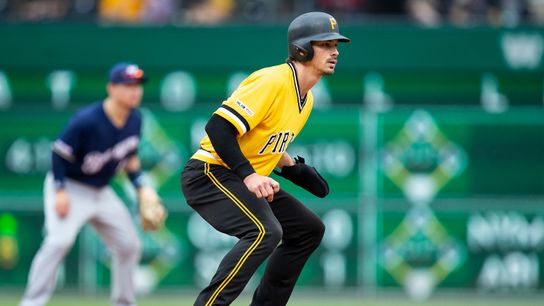STATE COLLEGE, Pa. -- Bryan Reynolds, a rookie, stands as having the sixth-best on-base percentage mark (.403 as of this writing) of any MLB hitter with at least 250 plate appearances. Should that figure remain at .400 or greater, he will be the first Pirates regular since Andrew McCutchen in 2015 to finish with an on base percentage of at least .400. Just in case you need a reminder of how good the 2013 National League MVP was at his peak, that 2015 mark was McCutchen's fifth-consecutive season in which he reached that plateau.
Though he carries a modest 38 walks -- good for a 9.7 percent rate when factored against the entirety of his 2019 PAs -- on the season, there are several factors at play in his plate discipline that can tell us more about Reynolds' ability to get on base.
First, a confession. I was inspired to look into this as I found myself once again defending Reynolds' abilities as folks are still pointing to his still absurdly high BABIP (batting average on balls in play) of .406 as a surefire sign of regression. We've been here before, yet today we'll take a different angle. Instead of pointing to consistently good exit velocity on all different kinds of pitches or the types of batted balls he's compiling, today we'll look at Reynolds' body of work on the fringes.
First, let's define that term. For everything in this post, I'll be using the "shadow" parts of the strike zone, defined by Statcast and seen below:
For reference, the green line traveling throughout zones 11 through 19 is the standard strike zone proper.
So, we're talking of the edges of the zone that provide the most variability from hitter to hitter. Batters can be made on how they perform on pitches in these areas. We'd be naive if we thought that umpiring doesn't play a significant part in the results seen in these areas, but luckily we don't have to in Reynolds' case.
Take a look at these gutsy takes:
Here's another:
And, another:
Three distinct takes, all in the shadow parts of the zone. All finishing off a walk. All on different types of pitches as well.
Of Reynolds' 38 walks, 17 of them -- more than a third -- have come in these nebulous areas. In doing so, Reynolds is taking one more weapon away from a pitcher. In a game wherein the guys on the mound already carry a huge advantage, repeating this approach over a full season carries a huge cumulative effect.
And here's one of those ways: a look at Reynolds' zone percentage of fastballs -- simply put, the percentage of fastballs he sees in the actual strike zone (again, that green box above) -- which has increased with each passing month:
When you can force a pitcher to come inside with stuff you can do damage with, you're going to have a good time at the plate. And Bryan Reynolds seems to be certainly enjoying himself since his callup.
MORE MOUND VISIT
Aug 15: Stratton the spin doc
Aug 13: A sputtering offense
Aug 12: Mitch Keller’s lack of curve
Aug 6: The pen’s core competencies
_________________
It is not my intention to hijack this space for anything other than baseball geekdom, but I would be quite remiss if I didn't take a moment to thank all of you, the DKPS community, as well as Dejan Kovacevic, Dali Kovacevic and everyone else on the DKPS staff for the incredible support I have received after my recent cancer diagnosis.
The outpouring of well-wishes and advice has been staggering, and has left me speechless at more than a few moments. It has been truly uplifting ... in so many ways. I will never forget them as my battle against this disease continues.



